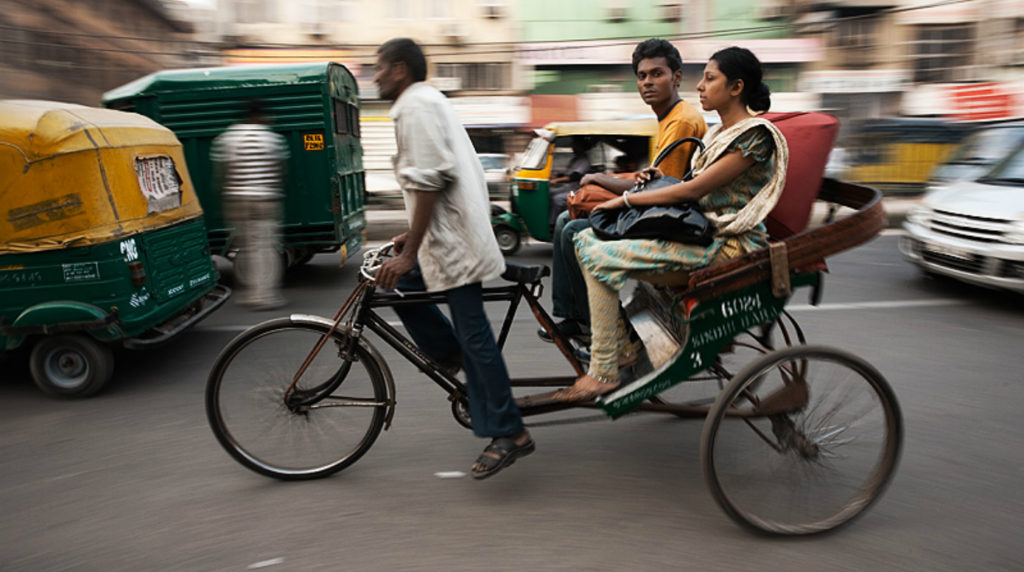Cyclists & other Non-Motorized vehicles should not be allowed on main roads in Metros – Parl. Standing Committee on Transport

[orc]The Parliamentary Standing committee on Transport, Tourism and Culture has recommended that Non-Motorized vehicles (cyclists etc) should not be allowed to use highways and main roads in cities. The committee mentioned that they create a lot of nuisance.
The Parliamentary Standing committee on Transport, Tourism and Culture has recommended that Non-Motorized vehicles (cyclists etc) not be allowed to use highways and main roads in cities. In its report presented to parliament on February 8th, 2017 for amendments to Motor Vehicles Act, the bizarre recommendation undermines rights of pedestrians and cyclists. India has always been opposed to the idea of rights to people in cities including opposing inclusion of “Right to City” at the UN Habitat in September 2016.
‘Non-Motorized vehicles create nuisance and do not follow road rules’
In its 243rd report on ‘The Motor Vehicles (Amendment) Bill, 2016’, the committee made some bizarre remarks about non-motorized vehicles. It mentioned that non-motorized vehicles do not follow road rules and create a lot of nuisance. The committee also felt that there is a need to streamline non-motorized vehicles by introducing minor penalty or punishment. And the committee recommended that the non-motorized vehicles should not be allowed on national highways and main roads of metro cities.
36% People use non-motorized transport
According to the Census 2011, only 13% population of India use motor cycles for transport. But Non-Motorized Transport (NMT) has a combined share of 36% with people travelling through cycles at 13% and pedestrians at 23%. In India cycle is so popular that few regional parties have it as their election symbol. NMT has many advantages for India, it can help reduce traffic in our clogged cities, improve health of citizens and the most important being its minimal carbon footprint. With the rise of pollution levels in Indian cities, it is important to promote these options than penalizing them. In fact, cars need to be discouraged and heavy penalties imposed for offences.
The committee notes while pedestrians are most vulnerable to accidents, it thinks pedestrians and cyclists do not follow rules and cause lot of nuisance on the road. The act of not following rules by pedestrians is termed as “Jaywalking” and India is not strange to the laws that penalize Jaywalking. State like Karnataka and West Bengal already implement them in major cities. This brings us to the question of “Right to Walk”, which has been contested multiple times in various high courts of Madhya Pradesh, Punjab and Haryana as a constitutional right under article 21 of “Right to Life”.
In his book “Walkable City” the author Jeff Speck proposes “General Theory of Walkability” which talks about how fragile pedestrians are and under the right conditions they thrive and multiply. The theory proposes a walk must be useful, safe, comfortable, and interesting. Several cities around the world are promoting Non-Motorized Transport options of walking and cycling. Indian cities are also slowly promoting Non-Motorized Transport options under the smart cities mission. Communities of pedestrians are also claiming the road spaces through campaigns like Equal streets and Raahgiri days around the country.
At this important juncture of urbanization when equality on road is required to minimize accidents and solve traffic issues of cities, the committee’s recommendations are appalling. It seems the policy makers of the country are unaware of ground realities and that is very concerning. As the bill has not been passed in the Parliament, it is important for other members of Parliament to act and reason themselves of what future they are planning for citizens.
Featured Image: www.dailytravelphotos.com